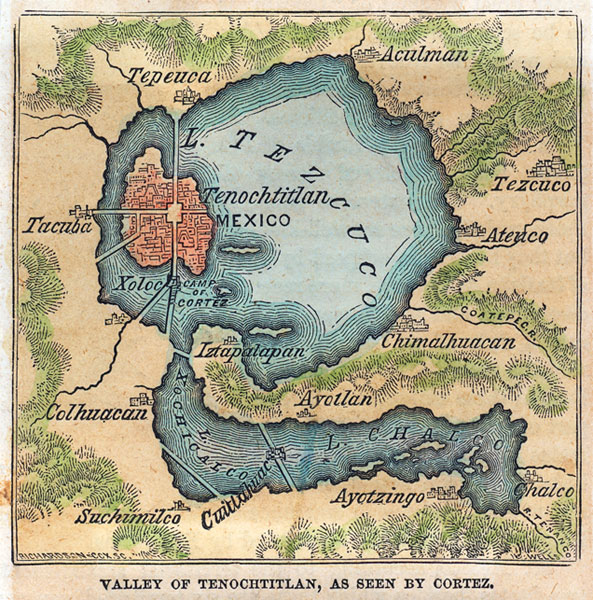Aztecs/Mexica
Social
Social Groupings
Calpulli
Clans formed while wandering, Aztecs had seven, shifted from kinship groups to residential
Building block of Aztec society, of which every person belonged
Goverend by councils of family heads, although not all families were equal nor all calpulli of equal status
Nobles were on top of commoners, most were born into the class, controlled priesthood and military leadership
New class of workers (like serfs) formed as nobility broke free from old calpulli and acquired private lands, workers did not control land and worked at will of others, low status (still above slaves), may have been war captives, criminals, or people who sold themselves into bondage to escape hunger
Other groups with scribes, artisans and healers, long distance merchangs formed "own" calpulli with own patron gods, privileges, and internal divisions, sometimes served as spies or agents for Aztec military, but were restricted from entro into or rivalry with nobility
Military
Linked to cult of sacrifice and infused whole society
If individual died while taking prisioners for sacrifice, considered a "flowery death", fitting end to a noble life, ensured eternity in highest heaven (same with women who died in childbirth)
Highly ritualized, with different orders and ranks of soldiers
Political
Political Grouping
During expansion, shifted from loose association of clans to society with levels, controlled by supreme ruler
Was intrusive and militant group, distrusted and disliked
State controlled and regulated markets, controlled use and distribution of goods and redistributed much of tribute received from subodinate peoples, tribute depended on whether or not subjects accepted or resited Aztec rule, more tribute given to nobility than commoners
Conflicts/Expansion
Aztecs were good fighters, useful as mercenaries or allies in conflict
After founding of Tenochtitlan, began creating alliances with other city-states, but mostly dominated them and controlled majority of tributes and lands from them
Interactions w/Environment
Location
Wandered around shores of Lake Texcoco in central valley of Mexico before settling on marshy island in the lake, founded city of Tenochtitlan

Did not have access to animals such as horses, cows...
Like other Mesoamericans, did not develop strong immunities to diseases that would arrive from Europe and end up with devastating results
Economic
Agriculture
Lands taken were used to grow food (sometimes demanded as tribute), peasant labor used
Built chinampas to irrage agriculture (beds of aquatic weeds, mud, and earth, placed in cane frames and rooted to lake floor, forming artificial floating islands and allowing water to reach all plants
Pochteca- special merchant class, specialized in long-distance trade in luxury items such as plumes of tropical birds and cacao
Cultural
Religion
Traditional deities, gods of rain, fire, water, corn... at least 128 major deities, but also had different formsand manifestations
Nezhualcoyotl- king of Texcoco, wrote hymns to "lord of the close vicinity", invisible foce that supported all gods, demonstrates "abstract idea of one central religious figure

Quetzalcoatl (feathered serpent, above)- ancient god of civilization Tlaloc- god of rain
Huitzilopochtli- Aztec tribal patron, central figure of cult of warfare and sacrifice in Aztec state
Aspects of religion greatly integrated into everyday life (calendar, sacrifices), but believed world was alreadty destroyed four times and would be destroyed again, so eventionally sacrifices to gods would not be enough to hold back their wrath
Art

Included poems written by Nezhualcoyotl, filled with images of flowers, birds, and song (greatly admired by Aztecs) but also blood and violence (above- Aztec sacrifice)
Customs
Like most peoples in central valley of Mexico, Aztecs spoke language of Nahuatl
Human sacrifice was central to culture, some land even left unconquered for "flower wars" between sides to obtain captives for sacrifice
